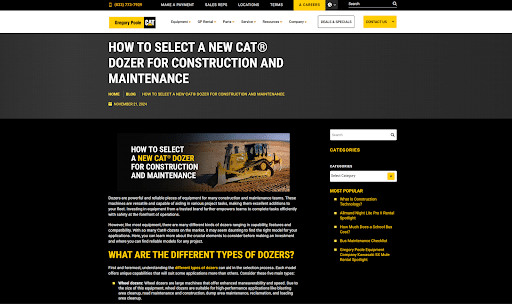New construction means digging. This can lead to certain issues.
Whether you are planning new construction or are doing an excavation for something else, it is important to understand hazards like excavation.
Allow us to discuss the four most common excavation hazards so that you can plan to avoid them.
Read on to know more.
Table of Contents
1. The Collapse of the Trench Walls
This occurs when the soil around the trench walls becomes unstable and collapses. It can trap workers and machinery below. The weight of the soil and the force of the surrounding earth can put immense pressure on the walls, causing them to shift and cave in.
This can lead to serious injuries and even death for workers in the trench. To prevent this hazard, proper shoring and bracing techniques must be used.
This is to give support and stability to the walls. Regular inspection and monitoring of the trenches is crucial in identifying potential risks. Discuss them before they result in a collapse.
2. Risk of Struck-by Hazards
This hazard stems from the heavy machinery used in excavation. This includes cranes and backhoes, which can drop materials or hit workers. Additionally, workers are at risk of being struck by falling or shifting soil and rocks.
Proper safety precautions, such as the use of protective barriers and regular equipment inspections, can help mitigate the excavation risk. This will ensure the safety of workers at excavation sites.
3. Electrical Hazards
As construction workers dig into the ground, they often come across buried electrical cables and other sources of electricity. This can create a dangerous situation. Accidental contact with these wires can lead to electrical shock or electrocution.
Also, heavy machinery and digging equipment near these electrical hazards increase the risk of accidents. Proper training and precautionary measures, such as using ground fault circuit interrupters and ensuring all equipment is insulated, are vital to preventing electrical accidents during excavation work and keeping workers safe.
4. Presence of Underground Utilities
These utilities include gas pipelines, water pipes, telecommunications cables, and electrical wires. Accidentally hitting these utilities can result in serious injuries, property damage, and even fatal accidents. It is crucial for construction workers to read about underground excavation safety when working near or around these underground utilities.
Prior knowledge and thorough identification of these utilities through utility mapping can help prevent potential disasters. This will ensure the safety of all workers involved in the excavation process.
Learn How to Mitigate Common Excavation Hazards
The risks and dangers associated with excavation are not to be taken lightly. As construction professionals, let us focus on safety and follow the necessary precautions to avoid excavation hazards. Take the necessary steps to educate yourself and your team on excavation safety protocols.
Don’t wait to act until it’s too late. Join the movement towards a safer work environment today.
Take action and carry out these safety measures on your next excavation project. Stay safe and happy digging!
Did you enjoy this article? For more great tips and tricks, please browse the rest of our blog.





